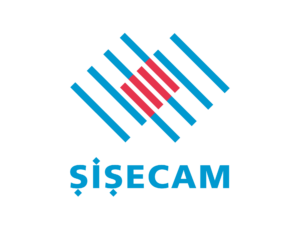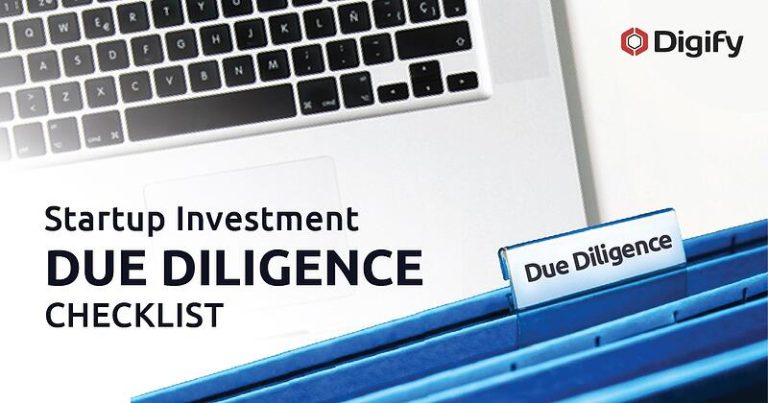Mergers and acquisitions (M&A) are reshaping industries, driving growth, and fostering innovation. As businesses seek to consolidate market share or enter new markets, M&A remains a cornerstone strategy.
Ernst & Young’s research predicts a 20% increase in corporate M&A deals over $100 million, highlighting the momentum in this space. But high stakes come with high risks. Without a meticulous due diligence process, deals can falter due to unforeseen liabilities or missed opportunities.
This guide outlines a structured approach to due diligence for buyers and sellers. We’ll explore the evolving landscape, the latest market trends, and data-driven insights and offer tips for best practices.
Contents
What is Due Diligence in M&A?
Due diligence is a comprehensive review of a company’s financial, operational, and legal frameworks to evaluate its value and uncover potential risks.
In M&A, due diligence is a tool for buyers to assess strategic fit, identify red flags, and negotiate terms. Sellers can use it to preemptively address issues, showcase strengths, and enhance their appeal to buyers.
Modern tools like virtual data rooms (VDRs) have streamlined the due diligence process, enabling secure collaboration and efficient information sharing.
Why the M&A Due Diligence Process is Key to Success
Due diligence is more than a checkbox in the M&A process — it’s the backbone of a successful deal.
For buyers, the benefits are:
- Risk mitigation: Identifying financial inconsistencies, legal liabilities, or operational inefficiencies.
- Strategic insight: Understanding the target’s market position, business model, and growth trajectory.
- Negotiation power: Using findings to refine valuation or terms.
For sellers, the benefits are:
- Transparency: Addressing potential buyer concerns upfront.
- Stronger valuation: Presenting an organized, well-supported case for your company’s worth.
Types of Due Diligence in Mergers and Acquisitions
Buy-side Due Diligence
Focuses on identifying risks, confirming valuation, and evaluating strategic fit with the buyer’s goals.
Sell-side Due Diligence
Prepares the company for scrutiny by organizing financial, operational, and legal data for clarity and transparency, reduces buyer concerns, and highlights strengths.
The acquiring company conducts buy-side due diligence to evaluate the target business thoroughly before finalizing the transaction. Its main focus is on assessing risks and validating the deal’s value.
The company planning to sell initiates sell-side due diligence. This proactive approach prepares for potential buyers’ scrutiny and reduces transaction risks.
Buyers might uncover inflated asset valuations or unresolved legal issues during their due diligence. Sellers can reduce these risks by addressing them proactively.
Buy-side and sell-side due diligence are crucial for a successful transaction. Buyers want to find risks and confirm opportunities, and sellers want to present their businesses in a positive light.
By mastering these methods, organizations can improve negotiations and achieve win-win results.
M&A Due Diligence Document Checklist
A successful due diligence process depends on providing a comprehensive and organized set of documents.
Whether you’re on the buy or sell side, having the relevant documentation ensures transparency, minimizes delays, and builds trust.
Here’s a list of the types of documents usually required:
- Audited financial statements (3-5 years)
- Tax returns and compliance records
- Revenue and profit analysis
- Budget forecasts and projections
- Debt agreements and loan schedules
- Contracts with vendors, suppliers, and clients
- Partnership agreements
- Intellectual property documents (patents, trademarks, copyrights)
- Litigation history and disputes
- Regulatory compliance certificates
- Employee contracts and benefit plans
- Organizational charts and retention plans
- Non-compete and confidentiality agreements
- Payroll and bonus structures
- Inventory and asset lists
- Customer databases and sales pipelines
- Supplier agreements and logistics data
- Industry-specific certifications
- Environmental, health, and safety compliance records
- Data protection and cybersecurity protocols
Organizing these documents can be time-consuming, but a well-structured checklist makes the process much easier.
You can download Digify’s free Due Diligence Checklist to help make your M&A process seamless, transparent, and efficient.
The M&A Due Diligence Process: Step-by-Step Guide
Once the documents are in order, a structured due diligence process helps uncover critical insights and reduces risks.
Follow these six steps:
1. Plan the process
Define objectives and assemble a multidisciplinary team. Conduct initial research to understand the target’s industry and market position.
2. Perform legal analysis
Review contracts, intellectual property rights, and regulatory compliance to uncover potential liabilities.
3. Conduct financial review
Validate financial health by analyzing historical statements, revenue streams, and tax records.
4. Assess HR and organizational culture
Examine employee contracts, benefits, and turnover rates. Understand workforce dynamics for smooth integration post-acquisition.
5. Ensure compliance
Verify alignment with industry regulations and environmental standards. Use this step to identify potential penalties or reputational risks.
6. Present final analysis
Summarize risks, opportunities, and recommendations in a comprehensive report to guide negotiations and integration planning.
—
The process is multifaceted, but with these steps, your organization can make informed decisions that maximize value and minimize risks in every transaction.
How to Overcome Common M&A Challenges
The due diligence process is critical but not without challenges. Addressing these proactively can safeguard the transaction for a successful outcome.
Challenges
Incomplete, outdated, or inconsistent data can lead to incorrect valuations, missed risks, and delays in the process.
Solutions
- Conduct sell-side due diligence to prepare accurate and organized documentation before buyer evaluation.
- Use virtual data rooms to centralize data storage and streamline the sharing of real-time updates to ensure all parties work from the most current information.
- Implement thorough cross-referencing systems to verify the accuracy of financials, legal agreements, and compliance documents.
Overlooking regulatory or industry-specific compliance requirements can expose all parties to financial penalties or reputational damage post-acquisition.
Conduct a compliance audit, focusing on industry-specific requirements, environmental regulations, and data protection standards.
Leverage advisors or third-party experts to identify hidden compliance risks and ensure valid certificates and licenses.
- Use VDRs with audit trails to track and document compliance verifications for future reference.
Even the most successful processes can fail to address post-acquisition integration risks, such as cultural mismatches, operational misalignment, or employee retention issues.
HR should be included as a core part of the evaluation to understand workforce structure, contracts, and organizational culture.
Develop a detailed integration plan outlining steps for aligning systems, processes, and teams post-acquisition.
- Engage key stakeholders early to address concerns and build support for a smoother transition.
Tackling these challenges can improve M&A strategies and protect investments, preparing your business for a smooth transition to growth after the acquisition.
Streamlining M&A Due Diligence with Virtual Data Rooms
Modern M&A relies heavily on virtual data rooms (VDRs) to manage the flow of sensitive information.
What are M&A virtual data rooms?
VDRs are secure online platforms for storing, sharing, and managing sensitive documents during M&A transactions. Unlike physical rooms, VDRs allow authorized stakeholders instant access, streamlining collaboration and decision-making.
The benefits of using virtual data rooms
Virtual data rooms have transformed the due diligence process, offering advantages that improve efficiency, security, and transparency.
Here’s why VDRs have become critical for buyers and sellers:
1. Enhanced security
- Advanced encryption: Protects data during storage and transfer.
- Dynamic watermarking: Deters unauthorized sharing and tracks leaks.
- Granular access control: Restricts who can view, download, or edit files.
2. Improved collaboration
- Centralized access ensures all parties work with the most up-to-date documents.
- Real-time updates and notifications keep stakeholders aligned.
- Built-in Q&A tools facilitate seamless communication.
3. Faster decision-making
Quick, secure access to documents eliminates bottlenecks, ensuring transactions proceed smoothly.
—
These safeguards protect data while making it accessible to authorized parties.
Streamline Your M&A Process with Digify
Key features:
- Secure document sharing: Advanced encryption, customizable permissions, and activity tracking.
- Granular access control: Instantly revoke access or set permissions at the user level.
- Time-saving automation: Drag-and-drop uploads and intuitive organization streamline workflows.
Why choose Digify?
Digify simplifies coordination, boosts security, and supports businesses during every stage of the M&A process.
With scalable solutions for single or multiple deals, Digify helps businesses streamline their M&A processes through its user-friendly design and advanced collaboration tools.
Get Started with Digify Today
Due diligence is the cornerstone of any successful M&A transaction. Businesses can secure their investments, build trust, and maximize value by following a structured process and leveraging tools like Digify’s VDR.
Discover how Digify can streamline your M&A efforts with a personalized demo or free trial today.









